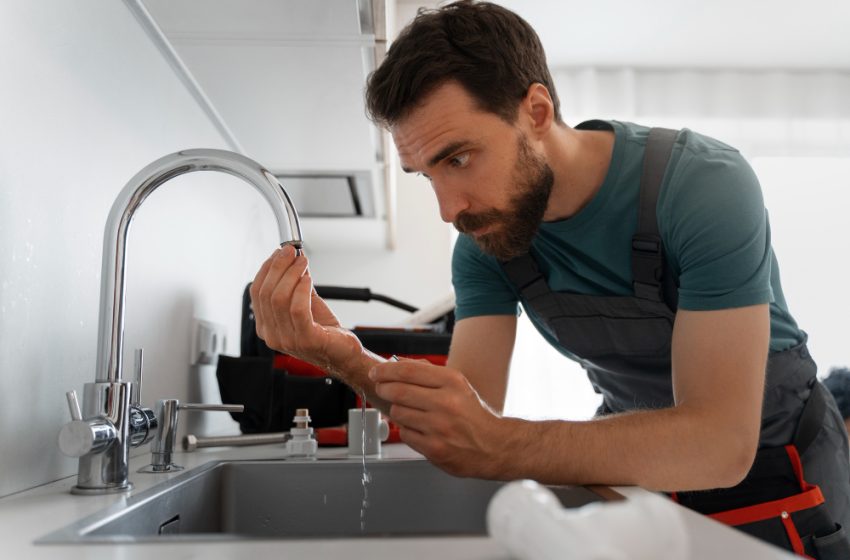Understanding the Cost of Repiping Your Home: What You Need to Know

Repiping your home may sound like an overwhelming and expensive project, but it’s often a necessary investment to maintain the safety, efficiency, and value of your property. Whether your pipes are old, corroded, or frequently leaking, repiping can save you money in the long run by preventing water damage and costly repairs. This guide will help you understand the factors that influence the cost of repiping your home, what to expect during the process, and how to budget for it effectively.
What Is Repiping, and When Do You Need It?
Repiping involves replacing old or damaged pipes in your home with new ones. This could mean replacing the entire plumbing system or just specific sections, such as water supply lines.
Signs You Might Need Repiping:
- Frequent leaks or pipe bursts.
- Low water pressure.
- Rust-colored or foul-smelling water.
- Visible corrosion on exposed pipes.
- High water bills due to undetected leaks.
If your home is older and has galvanized steel or polybutylene pipes, it’s worth considering repiping as these materials are prone to corrosion and failure.
Factors Affecting the Cost of Repiping
The cost of repiping varies widely depending on several factors:
1. Size of Your Home
- Smaller Homes (1-2 bedrooms): Typically cost less, as fewer pipes are needed.
- Larger Homes (3+ bedrooms): Require more materials and labor, increasing the overall cost.
2. Pipe Material
The type of pipes you choose significantly impacts the cost:
- PEX (Cross-Linked Polyethylene): Affordable, durable, and flexible, making it a popular choice for repiping.
- Copper Pipes: More expensive but highly durable and resistant to bacteria.
- CPVC (Chlorinated Polyvinyl Chloride): A cost-effective alternative to copper, but less flexible than PEX.
3. Accessibility of Pipes
If your pipes are located behind walls, under floors, or in hard-to-reach areas, the labor costs will be higher due to the added complexity.
4. Extent of the Repiping
- Partial Repiping: Replacing pipes in specific problem areas costs less than a full repipe.
- Whole-House Repiping: Involves replacing all plumbing lines and is more expensive but ensures a comprehensive upgrade.
5. Local Labor Costs
Labor rates vary by region. Urban areas with higher living costs typically have higher labor charges than rural locations.
6. Permits and Inspections
Many municipalities require permits and inspections for repiping work, which adds to the overall cost.
Average Cost of Repiping a Home
The following are general estimates for repiping costs in the U.S.:
- Small Homes (1,000 sq. ft.): $1,500 to $4,000.
- Medium Homes (1,500-2,000 sq. ft.): $4,000 to $15,000.
- Large Homes (2,500+ sq. ft.): $10,000 to $20,000 or more.
These figures include materials, labor, and permits but can vary based on the factors mentioned above.
The Repiping Process: What to Expect
Repiping your home is a multi-step process that typically involves the following:
1. Initial Inspection
A professional plumber will assess your current plumbing system to determine the scope of the work and provide a detailed estimate.
2. Planning and Permits
The plumber will create a plan for the new piping layout and secure any necessary permits.
3. Pipe Replacement
- Access points will be created by cutting into walls, ceilings, or floors as needed.
- Old pipes will be removed, and new ones installed.
4. Restoration
After the new pipes are installed, the plumber will restore any cut walls, ceilings, or floors to their original state.
5. Testing and Inspection
The plumber will test the new system for leaks and ensure it meets local codes and standards.
How to Budget for Repiping
- Get Multiple Quotes: Obtain estimates from several licensed plumbers to compare costs and services.
- Choose the Right Material: Opt for durable materials like PEX or copper that fit your budget.
- Plan Ahead: If you suspect your pipes need replacing, start budgeting early to spread out the expense.
- Check for Financing Options: Some plumbing companies offer payment plans or financing to help manage the cost.
- Explore Home Insurance: Check if your insurance covers any portion of the repiping work due to damage caused by leaks.
Benefits of Repiping Your Home
While repiping may seem like a significant expense, it comes with long-term advantages:
- Improved Water Quality: Eliminate rust, debris, or contaminants from old pipes.
- Increased Water Pressure: Say goodbye to low water flow issues.
- Energy Efficiency: New pipes can improve the efficiency of your water heater, lowering energy bills.
- Enhanced Property Value: Updated plumbing is an attractive feature for potential buyers.
- Peace of Mind: No more worrying about leaks or pipe failures.
When to Call a Professional
Repiping is a complex project best left to licensed and experienced plumbers. DIY attempts can lead to costly mistakes and potential code violations.

